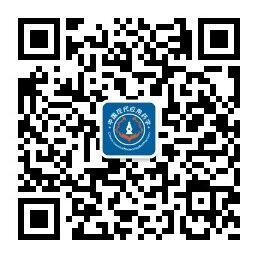| 引用本文: | 刘娥,邹福贤,刘婷.基于FAERS的三氧化二砷不良反应信号挖掘与分析[J].中国现代应用药学,2025,42(4):63-69. |
| Liu E,Zou Fuxian,Liu Ting.Mining and analysis of adverse drug reaction signals of Arsenic Trioxide based on FAERS[J].Chin J Mod Appl Pharm(中国现代应用药学),2025,42(4):63-69. |
|
| 摘要: |
| 摘要:目的 通过对三氧化二砷的药品不良反应(adverse drug reaction, ADR)信号进行挖掘分析,探讨该药潜在的不良反应,为临床安全合理用药提供参考。方法 检索美国食品药品监督管理局不良事件报告系统(FDA Adverse Event Reporting System, FAERS)数据库中截至2023年第2季度有关三氧化二砷的相关数据,利用比值失衡测量法中的报告比值比法(reporting odds ratio, ROR)以及英国药品和医疗保健产品管理局的综合标准法(Medicines and Healthcare Products Regulatory Agency,MHRA)进行数据挖掘,根据国际人用药品注册技术协调会发布的《国际医学用语词典》(Medical Dictionary for Regulatory Activities,MedDRA 26.0)的系统器官分类(system organ class, SOC)和首选术语(preferred terms, PT)对数据进行描述和分类。结果 共获取三氧化二砷相关的ADR报告2 084例,其中男性患者924例,女性841例,35岁患者1 276例,上报数据主要源于美国(429例,20.59%);严重的不良事件共1 914例,占比91.84%,以导致住院或住院时间延长(711例,34.12%)和死亡为主(296例,24.20%)。共挖掘到358个ADR信号,涉及24种SOC,主要为各类检查(1 169例,21.17%)和各类神经系统疾病(361例,6.54%);发生频次较高的ADR以心电图QT间期延长、分化综合征、发热、呼吸困难等PT为主,其中感染性肺炎、白细胞计数降低、疾病进展等PT未被药品说明书收录。信号强度排名靠前的为分化综合征、造血系统肿瘤、白细胞过多等PT,而心肌心包炎、脓毒性栓子、中枢神经系统出血等PT未被说明书收录。结论 三氧化二砷会导致极高比例的严重不良反应,应对发生频次较高以及未收录在说明书中的ADR予以重视。在使用药物治疗前、治疗中及随访阶段,均应做好相关监测及上报工作,以有效保障患者用药安全。 |
| 关键词: 三氧化二砷 美国FDA不良事件报告系统 药物不良反应 数据挖掘 比值失衡法 |
| DOI: |
| 分类号: |
| 基金项目: |
|
| Mining and analysis of adverse drug reaction signals of Arsenic Trioxide based on FAERS |
|
Liu E1, Zou Fuxian2, Liu Ting1
|
|
1.Second Affiliated Hospital, Fujian Medical University;2.Quanzhou Orthopedic Traumatological Hospital
|
| Abstract: |
| ABSTRACT: OBJECTIVE By mining and analyzing the adverse drug reaction (ADR) of arsenic trioxide and exploring its potential adverse reactions, reference is provided for the safe and rational use of drugs in clinical practice. METHODS Relative ADR reports of Arsenic Trioxide from the first quarter of 1998 to the second quarter of 2023 in the FDA Adverse Event Reporting System (FAERS) database were collected; data mining was conducted using the reported odds ratio (ROR) method and Medicines and Healthcare Products Regulatory Agency (MHRA) method of disproportional method. ADR reports were described and classified according to the system organ class (SOC) and preferred term (PT) in the Medical Dictionary for Regulatory Activities (Medical Dictionary for Regulatory Activities,MedDRA 26.0). RESULTS A total of 2 084 cases of ADR reports related to Arsenic Trioxide were retrieved; involving 924 male patients and 841 female patients. There were more patients aged 35-100 (1 276 cases), the main reporting country being the United States (429 cases, 20.59%), and a total of 1 914 cases of severe adverse drug events, accounting for 91.84%, mainly leading to hospitalized (711 cases, 34.12%) and died (296 cases, 24.20%). A total of 358 ADR signals were excavated, involving 24 types of SOC, mainly including investigations (1 169 cases, 21.17%) and nervous system disorders (361 cases, 6.54%); The main adverse events with a high frequency of occurrence are electrocardiogram Qt prolonged, differentiation syndrome, pyrexia, dyspnoea, and other PTs. The drug instructions do not include pneumonia, white blood cell count decreased, and disease progression. The signal intensity ranking high is mainly characterized by differentiation syndrome, haematopoietic neoplasm, hyperleukocytosis and other PT, and myopericarditis, septic embolus, and central nervous system haemorrhage are not included in the drug instructions. CONCLUSIONS Arsenic trioxide can cause a high proportion of serious ADR, and attention should be paid to ADR that occur frequently and are not included in the instructions. Before, during, and during the follow-up phase of medication treatment, relevant monitoring and reporting work should be carried out, to effectively ensure the safety of medication for patients. |
| Key words: arsenic trioxide FAERS database adverse drug reactions data mining disproportional method |
